This is an extensive article on social media addiction, where I simplify the various psychological and neurobiological effects social media addiction has on our brains and cognitive abilities, in a world where the vast majority of us have trouble focusing and experience a short attention span.
I will explain research on social media addiction, simplifying the psychology and neurobiology involved. I’ll also discuss social media and mobile phone addiction in teenagers, and its impact on their brains and ability to control their thoughts and actions.
I’ll share some facts on social media addiction and discuss how apps like TikTok and Instagram can make it hard to focus and create cycles of addiction. I will also touch on the main differences between the real ADHD and “ADHD” caused by social media overindulgence.
Grab a cup of tea, and let’s dive right in!
- SMARTPHONE ADDICTION
- What are the characteristics of phone addiction?
- Behavioral pattern
- SOCIAL MEDIA ADDICTION
- TikTok Addiction, the effect of short form content on the brain
- Exploring the Impact of social media addiction on our attention span
- Cognitive Effects and Context Switching
- FINAL THOUGHTS
- RESOURCES
- DISCLAIMER
SMARTPHONE ADDICTION

What are the characteristics of phone addiction?
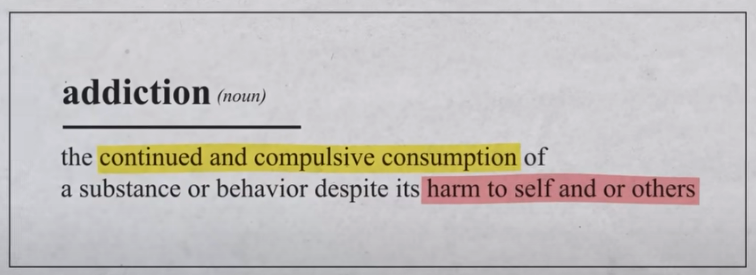
Smartphone addiction is an excessive or uncontrolled use of the phone, disrupting users’ daily lives. In order to be more specific in our approach, let’s start by defining phone addiction as a potential behavioral addiction. That is characterized by these elements:
Compulsive & Excessive Use
According to Reviews.org, Americans check their phones 144 times on average per day (or one time every 7 minutes). 89% of them start doing so within the first 10 minutes of waking up! The average screen-on-time is about 4 hours and 30 minutes per day.
Loss of Control
Loss of control with smartphone addiction means good intentions go awry. A quick check spirals into hours… The urge to keep using it overpowers logic despite knowing the negative impacts… And intrusive thoughts about updates constantly disrupt your focus.
Let’s say you received an Instagram message notification… “Just checking my IG dm for a minute,” you think, glancing at the clock at 11pm. Next thing you know, you’re down a rabbit hole of short format videos. Woken up by a 3am notification after 4 hours lost in a TikTok doom-scrolling trance. Scrambling to get a few hours of sleep before that morning meeting.

General Phone Addiction Impacts
Phone addiction, even mild, can be a drag. As an example: sleep suffers, messing with your mood and energy levels. Relationships get strained as your phone hogs your attention. FOMO adds to the mix, leaving you feeling isolated and drained.
Anxiety and Depression: Teens addicted to phones, who spend more than 7 hours daily glued to their screens, face a significantly heightened risk of developing depression and anxiety, according to a recent three-year study.
Research suggests a link between frequent mobile phone use and a bias towards immediate rewards. This phenomenon, known as delay discounting, could impact our ability to pursue long-term goals (take saving money as an example).
This relentless pursuit of immediate gratification through excessive phone use (or other addictive behaviors) can lead to anhedonia, a state characterized by a diminished ability to experience pleasure in any aspect of life.

Nomophobia
a new concept also known as smartphone separation anxiety, has gained increased attention due to its adverse effects. Although research at the latent-construct level has linked nomophobia with smartphone use or fear of missing out (FoMO). The thought of being disconnected – unreachable… out of the loop – can trigger a fight-or-flight response, leaving you feeling on edge and unsettled. Think of it as the phone’s withdrawal symptoms.
Behavioral pattern
Behavioral pattern in phone addiction refers to the repetitive and automatic behaviors associated with excessive phone use. These patterns become ingrained habits that control when and how you interact with your phone and different apps within it.
In most cases of smart phone addiction after a trigger whether psychological or physical (boredom, discomfort, intrusive thought, notification, call…). The user picks up the phone and then, app usage proceeds in a sequential fashion, one app triggering the next in a cascade of repetitive behavior.
This type of habitual reinforcement is further complicated as smartphones enable engagement with potentially addictive or compulsive behaviors. Such as online shopping, gaming, gambling, adult content, or our main suspect today: social media.
SOCIAL MEDIA ADDICTION
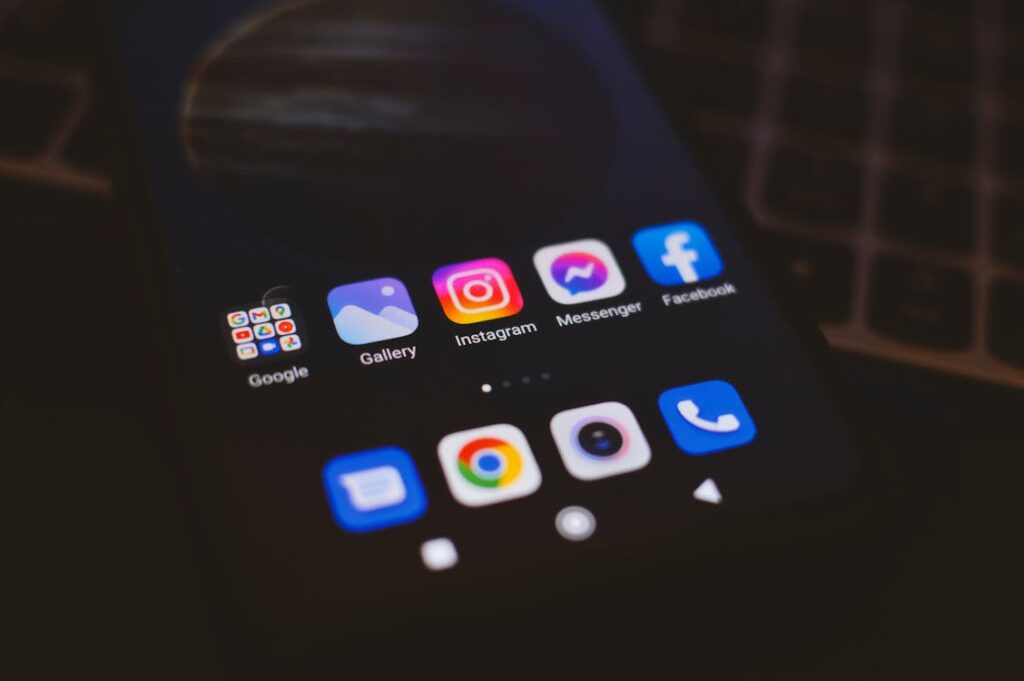
Social Media Addiction, is it our fault?
Fueled by a hunger for user engagement, social media platforms have harnessed the power of data collection and sophisticated algorithms. An example of this approach is documented in the popular 2020 Netflix documentary “The Social Dilemma,” where Facebook and different social media platforms prioritize growth and user retention through techniques designed to keep us glued to our screens.
Don’t beat yourself up, and that goes for everyone. Social media platforms are constantly gathering information about us, our habits, and our behavior, they use that information to capture our attention and keep us engaged as long as they can. They’re incredibly effective at it.
What are the effects of powerful algorithms on our brains? And how they keep us engaged neuro-chemically speaking?
Social media algorithms strategically target our brain’s reward structures (w/ dopamine), a deeply ingrained and primitive system that govern our behaviors. When algorithms trigger these structures, it creates a desire for more, urging us to pursue further (Dopamine is often called the “pleasure molecule,” but it’s more accurate to say it’s “the motivation and pursuing” molecule.)
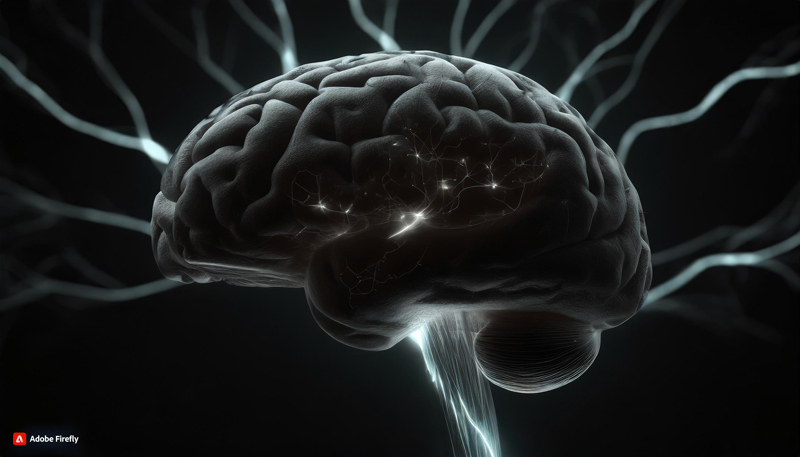
Social media companies have ensured that these algorithms remain dynamic and adaptable, adjusting based on the type of content we interact and engage with. When discussing algorithms, we’re essentially referring to presenting content in a sequence that resonates with our current mindset, and that’s nothing short of magical.
We’re all familiar with the craving for likes – they deceive our brains into perceiving a reward. Yet, even more enticing is the endless stream of personalized “for you” content that captivates us and put us in a state of trance. One can endlessly scroll for the next valuable (funny, triggering, emotional…) piece of “content” without reaching an endpoint! That’s why social media doom scrolling is commonly likened to gambling slot machines, where unpredictability plays a significant role. Here’s a breakdown of the comparison:
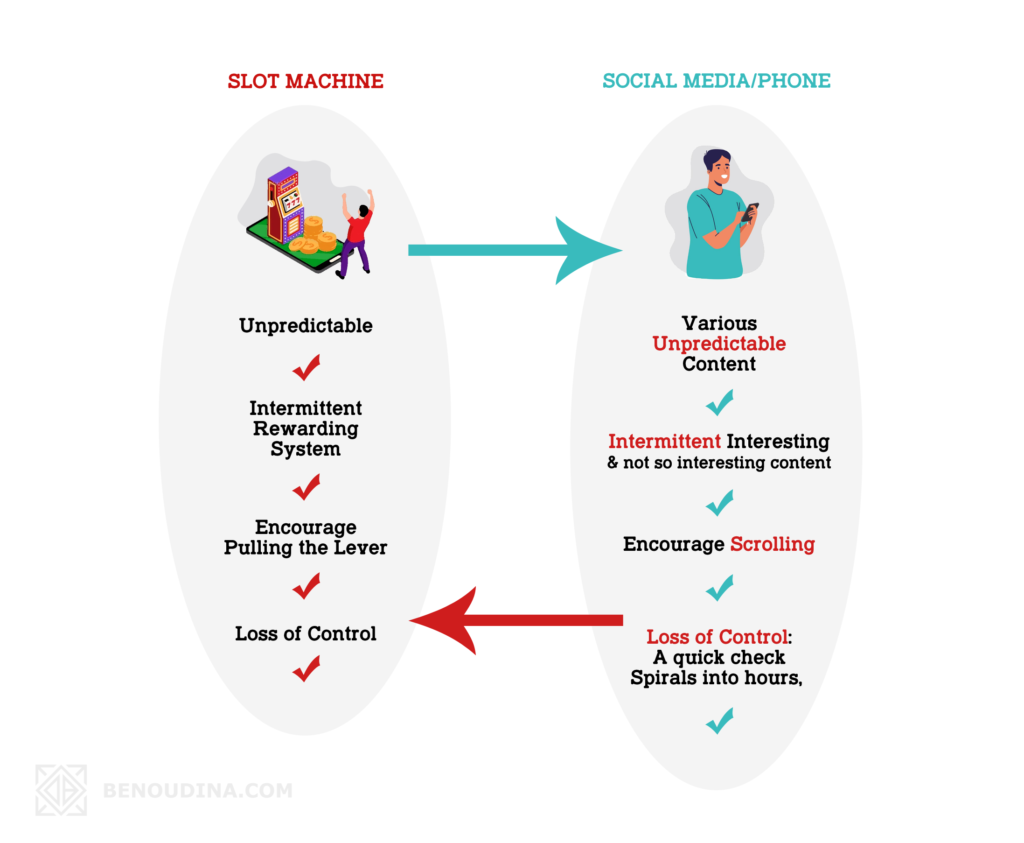
What are the effects of teenager social media addiction?
A notable aspect of a teenager’s or child’s brain is its active neuroplasticity. Teenagers’ brains excel at adapting and forming new connections based on experiences that the dopamine reward system deems valuable. Therefore, the effects we discussed earlier will have a greater impact on their malleable brains.

Consider it this way: A teenager’s natural, “healthy” reward system is typically triggered by positive real-life experiences such as academic and athletic achievements, genuine social interactions and relationships, and meaningful pursuits. However, social media addiction in teens activates their reward systems differently, where notifications, messages, likes, comments, and shares create a positive reinforcement loop, encouraging teens to seek out more social media use.
Over time, this can lead to teenagers becoming dependent on the pursuit of social media, making it challenging for them to derive meaning, pleasure, or satisfaction from other real-life activities.
On another note, the constant dopamine rush – reward system activation related to social media might hinder the development of the prefrontal cortex in teenagers. This brain region governs crucial functions like decision-making, impulse control, and emotional regulation. Potentially, this could lead to difficulties navigating real-life situations due to impulsivity and a disrupted emotional regulation.
TikTok Addiction, the effect of short form content on the brain

Evolving concerns surround TikTok addiction, and to a lesser extent, YouTube and Instagram addiction.
What TikTok did especially is fine tuning the already very powerful machine that we discussed, by ditching the clutter and focusing solely on the most potent, captivating content: short-form, visually-driven, videos. Unlike this long article (we get it!), TikTok delivers bite-sized entertainment in a never-ending stream. This focus on short, unpredictable bursts keeps users hooked, constantly scrolling for the next dopamine “hit”.
TikTok holds a particular allure for younger audiences, which is why we often observe children and teens addicted to Tik Tok more frequently than adults. To observe the extreme impact of doomscrolling on a young “malleable” human brain, you can watch these two videos of children sleeping while their brain replays the “valuable pursuit” of the next intriguing “event”. The dopamine reward system in their brain deems this activity highly rewarding. What do you feel when you watch this?
Exploring the Impact of social media addiction on our attention span
Do you ever find yourself saying “my attention span is short”? And wonder if TikTok is causing you ADHD? You’re not alone!
ADHD Versus “Smartphone ADHD”
The critical role dopamine plays in ADHD is well-established. Stimulant medications or Amphetamines like Adderall, the treatment for ADHD, work by boosting dopamine release in the brain. This explains their ability to enhance focus, alertness, and energy.

As a med student, it’s crucial for me to note the difference between naturally depleted dopamine in ADHD, and a brain accustomed to high dopamine levels due to excessive engagement in dopaminergic activities or substances (I discuss this matter extensively in this article: ADHD and Phone Addiction.) They have pretty similar symptoms, but the main difference is:
The first (ADHD) is something that’s medically treatable, a neuro-biological deficit/disruption in dopamine that leads to patterns of hyperactivity, inattention, and impulsivity.
While the second (a brain accustomed to high dopamine levels) is solved just by dialing down in the overindulgence and constant stimulation, such as using social media excessively. And which may lead to very similar signs like: less motivation, constant search for stimulation, impulsivity, and a reduced attention span.
Habituation, Repetitive Stimuli, and Adaptation
The constant stimulation and rapid-fire content on social media may condition the brain for shorter attention spans and difficulty maintaining focus on tasks requiring sustained concentration. Platforms like TikTok contribute to this by fostering habituation and repetitiveness, leading to adaptations in our attention and low concentration spans over time. This can lead to a decreased ability to focus on longer, more complex tasks. Reading a book or writing an essay might feel tedious compared to the quick potent bursts the social media addict’s brain is adapted to.

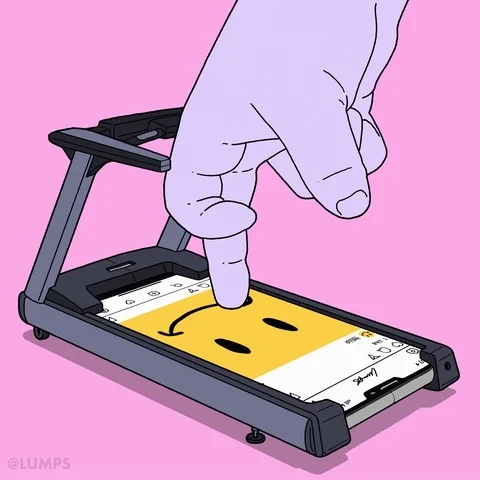
Consider it akin to a professional athlete, such as a boxer, who trains through repetitive attack combinations-defense patterns. Eventually, their brain adapts to the tasks they’ve habituated themselves to and will do it “automatically” during fights, the same happens in various professions. Similarly, the heavy consumption of potent short-burst content follow this pattern of habituation and adaptation on a mental level (or even a physical one by the movement of scrolling).
Cognitive Effects and Context Switching
There’s a concept known as “Context Switching,” which involves the mental transition between various activities or stimuli. In the realm of social media, this entails rapidly shifting between different pieces of information, posts, messages, and notifications. Moreover, it encompasses the diverse content itself, where one moment you may encounter a humorous meme, followed by a somber post, then a political message provoking anger, and so on. This continuous rapid variation in content keeps the mind constantly engaged and adapting to new information.
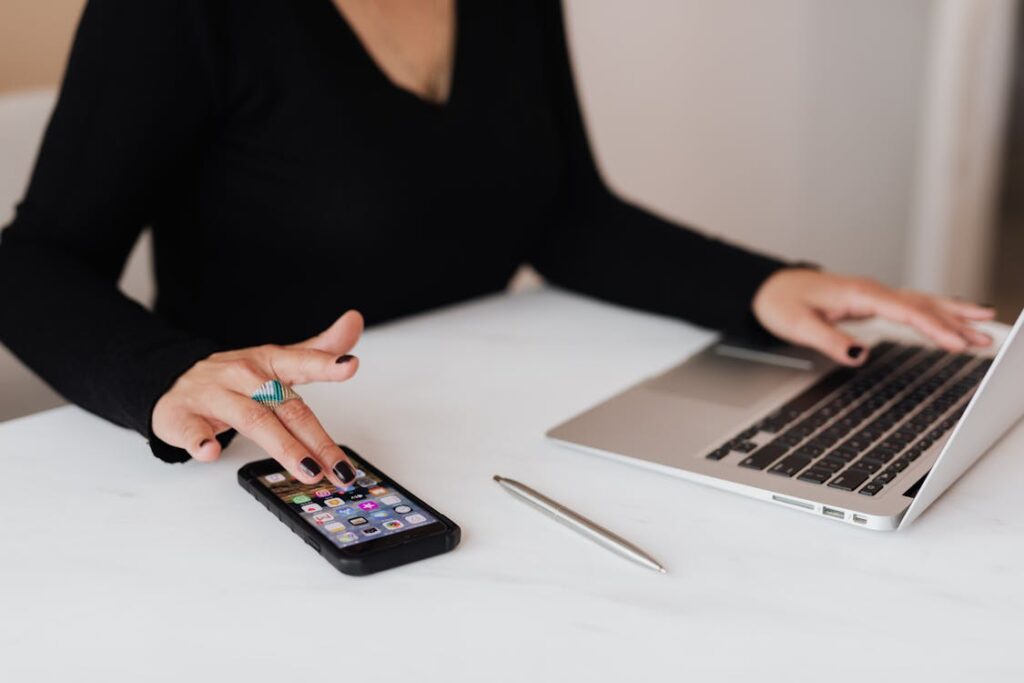
This rapid context switching creates a situation of information overload. Our brain adapts to keep up with the constant stream of this diverse content. It strains our working memory, the part of the brain responsible for holding and manipulating information in the short term. And again as an effect, focusing on any one thing for an extended period becomes difficult.
The constant shifting of attention can impede our ability to engage in deeper tasks, such as work or academic pursuits, leaving us in a perpetual cycle of playing catch-up. Each time we decide to disengage from our phones and refocus on real-world activities, we face a readjustment period as our brains recalibrate to the demands of the task at hand.
FINAL THOUGHTS
Whether we are discussing phone addiction in general or social media specifically, it’s essential to recognize the multifaceted nature of this issue. There are various factors contributing to the problem, including mental, and behavioral aspects (both psychological and neurobiological), as well as the intrinsic design of phones and algorithms of social media platforms. Together, these elements collaborate to capture and retain the attention of people who are addicted to social media. To effectively address solutions, it’s imperative to approach the issue with empathy and understanding.
Check out my second article about the issue of social media addiction. Where I delve into Benefits of Breaking Phone Addiction, and how quitting social media even for a short period of time can have a huge positive impact on different aspects of one’s life.
RESOURCES
Neurobiological mechanisms of anhedonia. Dialogues Clin Neurosci. 2008
How Teens and Parents Navigate Screen Time and Device Distractions
On the Psychology of TikTok Use: A First Glimpse From Empirical Findings
Analysis on the Phenomenon of Douyin Addiction among High School Students in Shanghai, China
DISCLAIMER
While proposals exist, smartphone addiction isn’t currently listed as a disorder in the DSM-5, the leading manual for mental health diagnoses. This article adopts a general approach and does not claim to diagnose or treat any mental health conditions, but rather helps those in concern evaluate their phone use habits and potential impacts on their well-being. It explores smartphone addiction, neuro-biological and psychological effects of social media addiction, research on smartphone addiction in teenagers, and social media addiction research, to provide information for making informed decisions about phone habits.
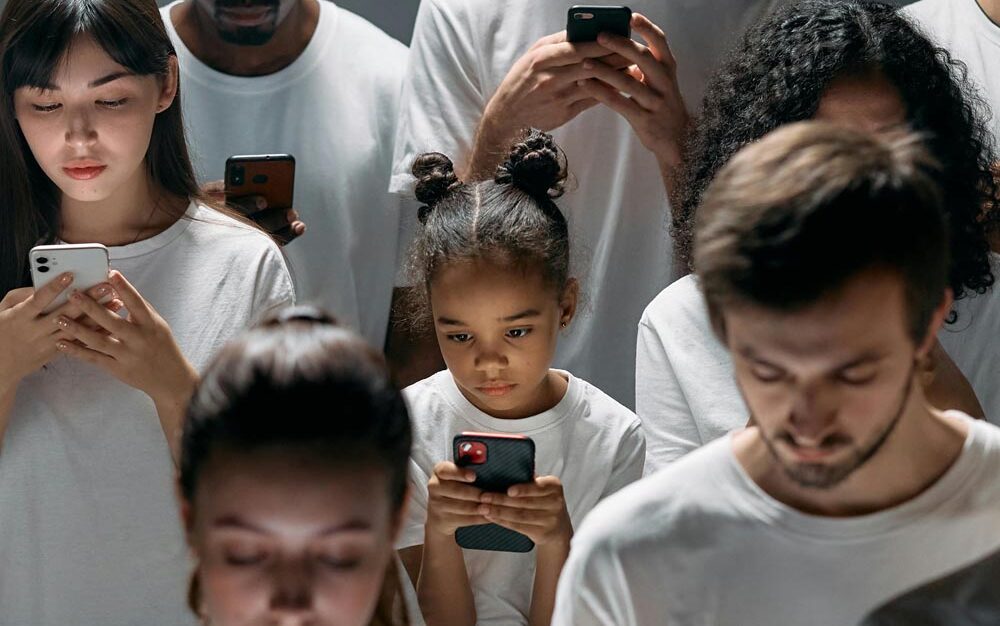
Leave a Reply